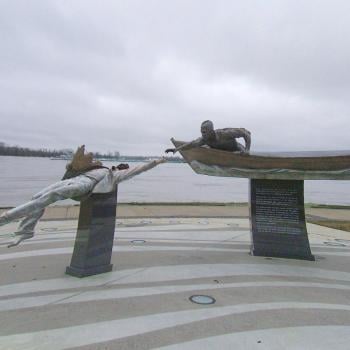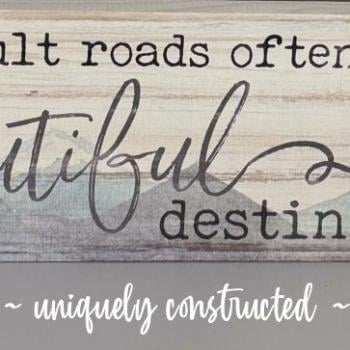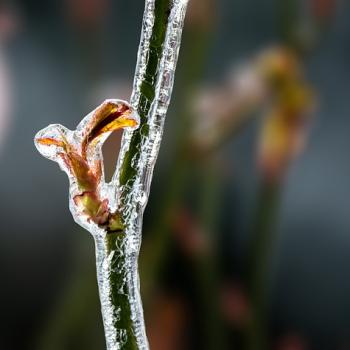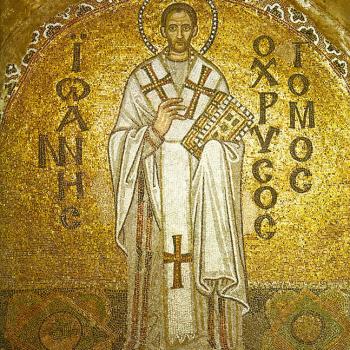Looking at your website, I notice that you often reference triadic arrangements connected to Antinous. Can you speak a little on their importance to His worship and the ways in which devotion to Antinous is developing within contemporary Paganisms?
Given my background in Celtic things, triadic reasoning (for lack of a better term) in theology seems rather natural. However, triads were not unknown elsewhere in the context of the late antique Mediterranean and its various religious and philosophical cultures, from Neo-Platonism and Gnosticism to Egyptian theology (e.g., the Memphite Triad of Ptah, Sekhmet, and Nefertem). While there is no definite and direct evidence for Antinous being thought of in particular triads in his ancient cultus, at least as far as my own reckoning goes, there is a triad implied by the history of Antinous himself in relation to Hadrian, who was deified, and also Hadrian's wife Sabina, who was also deified. This then can be extended in further directions, like the Treískouroi, or "Three Boys," constituting another young man in Hadrian's entourage who died, Lucius Marius Vitalis, Antinous himself, and then Vibullius Polydeukion, the youthful ward of the wealthy Greek Sophist and philanthropist (and both friend of Hadrian and cultist of Antinous) Herodes Attikos, who died young and was heroized by Herodes on the model of Antinous's cult. Various further permutations and combinations suggest themselves. From my earliest experiences in modern devotion to Antinous in 2002, my theological notions were triadic, particularly with this idea of Antinous in three aspects: the Lover, the Liberator, and the Navigator.
Something that many mystical and spiritual systems the world over suggest as a practice is to attempt to get beyond dualistic thinking. Unfortunately, much of modern Paganism enshrines one of the most basic dualisms into its central rituals and theology, that of Goddess and God, male and female. The easiest way to overcome dualism is to simply add more to the reckoning: thesis, antithesis, synthesis. One often tries to get beyond dualism by imagining the Tao symbol of Yin and Yang together from Taoism; but, I tend to prefer the animistic and polytheistic approach of Shinto, which has as one of its most basic symbols a circular shape like the Tao, but with three spirals within it instead of only two. Much else is built upon triadic or threefold reasoning or processes within Shinto additionally.
People often speak (mostly via Nietzsche) of the dualism of Apollonian versus Dionysian approaches to religion; but Karl Kerényi suggested that there was a third mode possible, which he thought of as Hermetic (in the sense of "Hermes-based"). Think about Hermes for a moment in relation to these other two deities: Hermes stole the cattle from Apollon, and were it not for his fleet-footedness, he would not have been able to save the fetal Dionysos from the flames to eventually be born from Zeus's thigh. Hermes is a very good mediating figure between and beyond the theorized extremes of Apollonian and Dionysian modalities—and to the benefit of each of those deities and their attendant modalities, I think. Indeed, three of the main deities to whom Antinous is syncretized are Dionysos, Apollon, and Hermes, so this creates a triad in itself.
I'm looking forward to a time in modern Pagan practice when Antinoan devotion takes as many and as diverse forms as possible. His epiphanies and theologies in the ancient cultus were manifold, and even promiscuous in their syncretism and their variety. While we can continue many of these without difficulty (and, indeed, many of them are very useful and attractive to adopt for oneself), we should also not expect them to stay static and fixed. The cultures currently known and which are spiritually accessible to a modern person are far more diverse even than the late antique Mediterranean was, and so as word of Antinous spreads and people become interested in him for whatever reason they end up doing so, I think the new forms of Antinous that emerge, the new theologies, and the new ways in which he is worshipped will be as much a surprise to me as to anyone (perhaps even to Antinous himself!), and I'm looking forward to seeing how things transform in the years and decades to come.
What advice would you give to someone seeking to develop a devotional relationship with Antinous?
The sine qua non for a relationship with Antinous, in my opinion, is having an image of him upon which to focus one's devotional attentions. This can be almost anything: a picture from a book or the cover of a book, a postcard, one of the coin replicas available for sale depicting him, an actual bust or statue replica, something you create yourself or that another artist has made, or simply the photo of your favorite depiction of him on your computer screen. (The most definitive and complete collection of these is available at http://www.antinoos.info/.) While there are apophatic dimensions to his devotion at various points, this is a cultus that dwells best in the realms of imagery and sensual detail, and because Antinous was a very specific person whose image and likeness is known with a great deal of certainty, using those images as focal points for our contact with him (and his contact with us!) is very useful.





